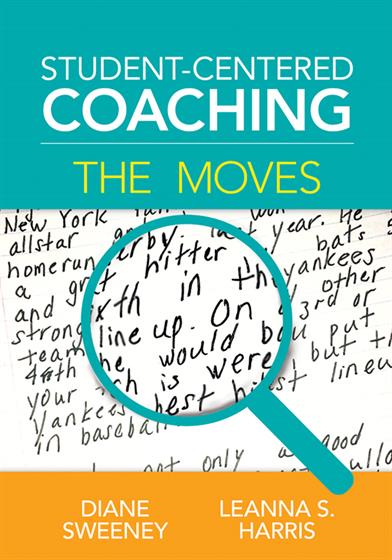Acknowledgments
About the Authors
Introduction
Our Coaching Beliefs
Core Practices for Student-Centered Coaching
Student-Centered Coaching Is Driven by Formative Assessment Data
How Student-Centered Coaching Compares With Other Coaching Models
Moving Forward
Chapter 1: Setting Goals for Coaching Cycles
The Move—Setting Goals for Coaching Cycles
Why Setting Goals for Coaching Cycles Is Important
What Setting Goals for Coaching Cycles Looks Like
Lessons From the Field
Tools and Techniques
A Final Thought
Chapter 2: Using Learning Targets
The Move—Using Learning Targets
Why Using Learning Targets Is Important
What Using Learning Targets Looks Like
Lessons From the Field
Tools and Techniques
A Final Thought
Chapter 3: Getting Ready for Coaching in the Classroom
The Move—Getting Ready for Coaching in the Classroom
Why Getting Ready for Coaching in the Classroom Is Important
What Getting Ready for Coaching in the Classroom Looks Like
Lessons From the Field
Tools and Techniques
A Final Thought
Chapter 4: Noticing and Naming
The Move—Noticing and Naming
Why Noticing and Naming Is Important
What Noticing and Naming Looks Like
Lessons From the Field
Tools and Techniques
A Final Thought
Chapter 5: Micro Modeling
The Move—Micro Modeling
Why Micro Modeling Is Important
What Micro Modeling Looks Like
Lessons From the Field
Tools and Techniques
A Final Thought
Chapter 6: Thinking Aloud
The Move—Thinking Aloud
Why Thinking Aloud Is Important
What Thinking Aloud Looks Like
Lessons From the Field
Tools and Techniques
A Final Thought
Chapter 7: Sorting Student Work
The Move—Sorting Student Work
Why Sorting Student Work Is Important
What Sorting Student Work Looks Like
Lessons From the Field
Tools and Techniques
A Final Thought
Chapter 8: Providing Strengths-Based Feedback
The Move—Providing Strengths-Based Feedback
Why Providing Strengths-Based Feedback Is Important
What Providing Strengths-Based Feedback Looks Like
Lessons From the Field
Tools and Techniques
A Final Thought
Chapter 9: Measuring the Impact of Coaching
The Move—Measuring the Impact of Coaching
Why Measuring the Impact of Coaching Is Important
What Measuring the Impact of Coaching Looks Like
Lessons From the Field
Tools and Techniques
A Final Thought
In Closing
Appendix
Resource A—If/Then Charts
Resource B—Coaching Logs
Resource C—Language Stems
Resource D—Planning Tools
Resource E—Agreements and Protocols
Resource F—Results-Based Coaching Tool
References
Index




